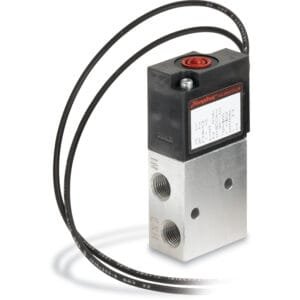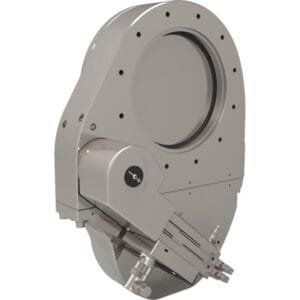TFM Flange System for High Vacuum and UHV Applications
The TFM flange system is a popular choice for high vacuum and ultra-high vacuum (UHV) applications due to its reliability and versatility. A wide range of vacuum components, such as gauges, instruments, feedthroughs, and accessories, are compatible with this flange system, making it highly adaptable for various setups.
Blank (Blind) Flanges: Purpose and Customization
A blank (or blind) flange is a solid, disc-shaped component that is commonly used to close off unused sections of tubing or ports in vacuum systems. These flanges can also be machined to create custom fittings, providing flexibility in system design and modification.
Sealing Mechanism of TFM Flanges
TFM flanges utilize a knife-edge sealing mechanism, with the knife-edge being slightly recessed below the flat surface of the flange. When the bolts of the flange pair are tightened, the knife-edges create annular grooves in a soft metal gasket, causing the gasket material to deform and fill surface imperfections on the flange. This results in a leak-tight seal. TFM seals can maintain vacuum conditions ranging from atmospheric pressure (760 torr or 103 mbar) down to < 1 x 10^-13 torr (< 1.3 x 10^-13 mbar). Depending on the materials used, the system can function effectively within a temperature range of -196°C to 450°C.
Flange Size Nomenclature
In North America, TFM flange sizes are typically referenced by their outer diameter (O.D.). However, in Europe and parts of Asia, the nominal internal diameter (nominal I.D.), which refers to the largest tube that can be welded to the bored flange, is used more frequently.
Types of TFM Flanges
TFM flanges are available in several versions, designed to meet different system needs:
Fixed Flange
A fixed flange consists of a single-piece design where the bolt-hole orientation is fixed relative to the fitting. This type is suitable for systems requiring a specific bolt alignment.
Rotatable Flange
A rotatable flange is composed of two parts: an inner weld ring and an outer bolt ring. The bolt ring can rotate around the weld ring, allowing for easier alignment of bolt holes during installation, which is particularly useful in complex assemblies.
Both fixed and rotatable flanges can be supplied with either through (clearance) holes or tapped holes, providing a range of options depending on installation requirements.
Applications of TFM Flanges
TFM flanges are widely used across industries requiring high or ultra-high vacuum conditions. Their robust sealing capabilities and adaptability make them essential in sectors like semiconductor manufacturing, materials research, and scientific instrumentation.
Through (Clearance) Holes
Are through-holes that allow adequate clearance for bolts to go through both flanges and secured by nuts or plate nuts.

Are imperial or metric threaded holes machined through the flange. This allows a clearance-hole flange to be connected without the need for nuts or plate nuts. Be aware of a components bolt hole orientation when selecting tapped flanges.
Ordering Table






Reviews
There are no reviews yet.